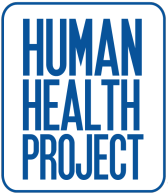9. Identifying Fraudulent Websites

Across the Internet, there are many fraudulent sites seeking to exploit unsuspecting users. In the realm of healthcare, where sensitive information is often exchanged, it’s crucial to distinguish between legitimate websites and potential scams. Here are some essential guidelines to help you identify legitimate websites and avoid falling victim to cyber scams.
Verify the URL
Always scrutinize the website’s URL before entering any personal or sensitive information. Scammers often create URLs that closely resemble those of legitimate websites but may contain slight variations, such as misspellings or additional characters. For example, “healthcarenonprofit.org” could be mimicked as “healthcaren0nprofit.org.” Pay close attention to these details to spot potential imposters.
Check for HTTPS
Legitimate websites, especially those handling confidential data like healthcare organizations, typically utilize HTTPS (Hypertext Transfer Protocol Secure) to encrypt data transmitted between your browser and the website’s server. Look for the padlock icon next to the URL in the address bar, indicating a secure connection. Avoid entering sensitive information on websites lacking HTTPS, as they may be susceptible to data interception by cybercriminals.
Examine the Website Design and Content
Scammers often replicate the design and content of legitimate websites to deceive users. Take a closer look at the website’s layout, graphics, and written content. Poorly designed or hastily assembled websites may indicate fraudulent intent. Additionally, scrutinize the quality of the writing and grammar, as many scam websites contain errors or awkward language usage.
Review Contact Information
Legitimate organizations typically provide clear and accurate contact information on their websites, including physical addresses, phone numbers, and email addresses. Verify this information by cross-referencing it with official sources, such as business directories or contact information listed on reputable platforms. Be cautious of websites that lack contact details or provide vague or inconsistent information.

Beware of Unsolicited Emails and Links
Exercise caution when clicking on links or accessing websites promoted through unsolicited emails, pop-up ads, or social media posts. Cybercriminals often use phishing tactics to lure victims to fake websites disguised as legitimate ones. Avoid interacting with suspicious links and refrain from providing personal information unless you can verify the authenticity of the website independently.
Utilize Trusted Sources
When seeking healthcare information or services online, rely on trusted sources such as government agencies, reputable healthcare organizations, or well-known medical institutions. These sources adhere to strict security protocols and are less likely to engage in fraudulent activities.
Stay Informed and Vigilant
Cyber threats are continually evolving, so it’s essential to stay informed about current trends and tactics used by scammers. Regularly educate yourself and your team members about cybersecurity best practices, including how to identify fake websites and avoid falling victim to scams. Remain vigilant when browsing the internet, and trust your instincts if something seems suspicious.
By following these guidelines and exercising caution when navigating the online landscape, you can help safeguard your personal information and protect yourself from falling prey to cyber scams.
